
Microsoft Power Platform
Veeva CRM meets Microsoft Power Platform
How about adding new functionalities to your Veeva CRM system – and doing so cost-effectively, quickly and Independently? The Salesforce Connector for Power Platform allows you to access Salesforce objects. Since Veeva CRM is technologically based on Salesforce.com, the question arises: is access via the connector to Veeva CRM also possible? Can the system also be addressed and extended by the Power Platform? The short answer is yes!
Example project: Time Off Territory - Holidays in Germany
In this example, Time Off Territory entries are automatically assigned to users in Veeva CRM using an Outlook calendar as data source.
The following actions are used:
· Read data from an Outlook calendar
· Read data from Veeva CRM database
· Write records in Veeva CRM
The goal is to store the data stored in the Outlook calendar (in this case holidays in Germany) as Time Off Territory data in Veeva CRM. But how can the data from the Outlook calendar shown in Figure 1 be stored in Veeva CRM (Figure 2)?
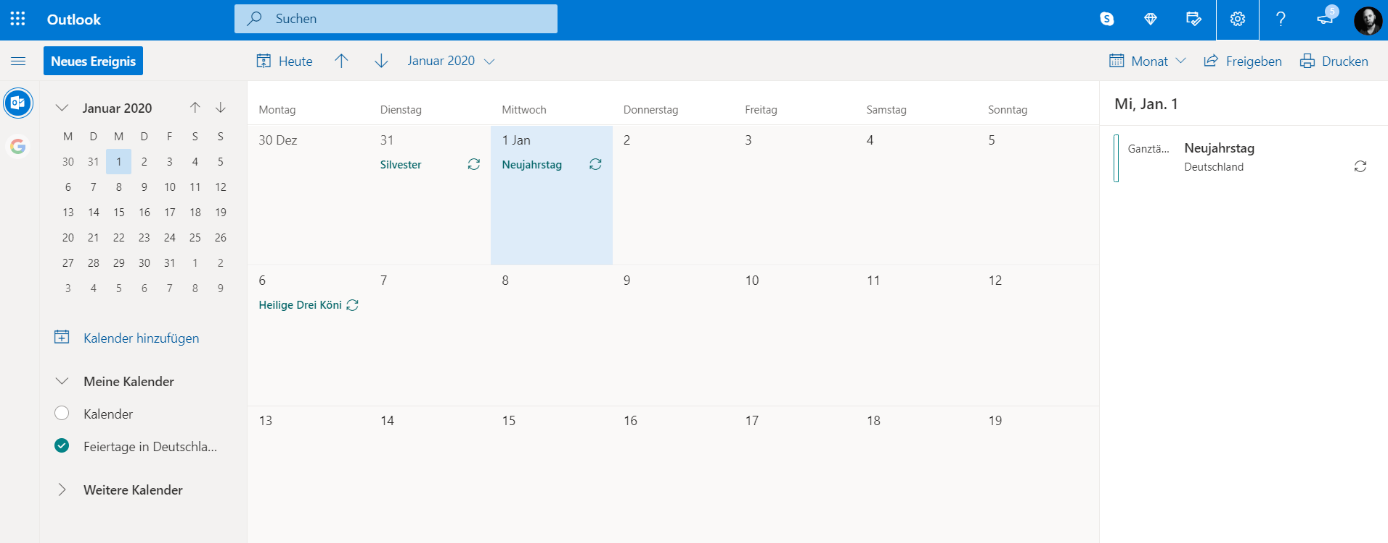
Figure 1 Entries in the calendar "Holidays in Germany"
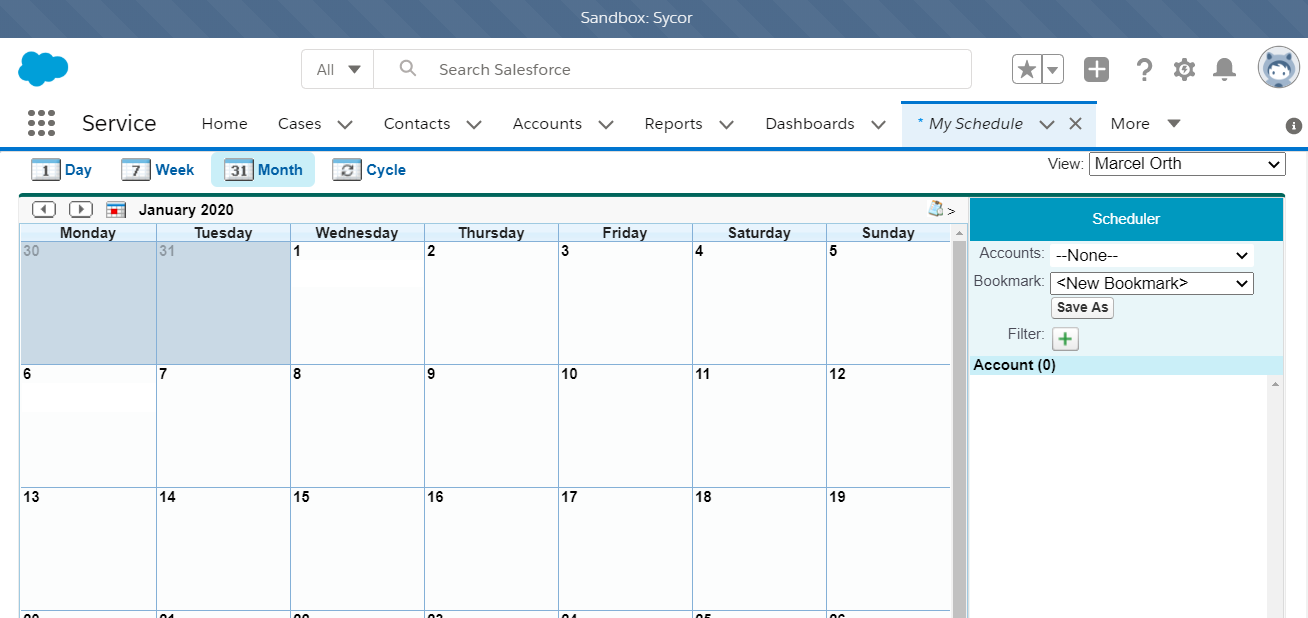
Bild 2: Veeva MySchedule - Ohne Time Off Territory Einträge
The Power Automate - Workflow
Step 1: Get calendar entries

In the first step, the corresponding dates of the holidays are read out from the calendar. For this we use the action "Get calendar view of events" with the selected calendar.

For simplicity, the date range in this example has been limited to a few days. As a result, all holidays in the date range are provided from as an array for further usage in the workflow.
Step 2: Get user records from Veeva CRM

In this example we add the fetched calendar data to all users in the system as a Time Off Territory records. Restrictions on certain roles / lines or regions are not applied for simplification reasons in this example but are possible.

We use the "Get records" functionality of the Salesforce connector to read user records. The related Salesforce / Veeva object we are looking for is "User." The result of this step is a list of Veeva CRM users.
Step 3: Create Time Off Territory records
Since they are both multiple calendar entries and multiple users, the creation of time off territory entries in Veeva CRM is handled inside two nested loops (1st loop over all fetched calendar entries, 2nd loop over fetched list of users).
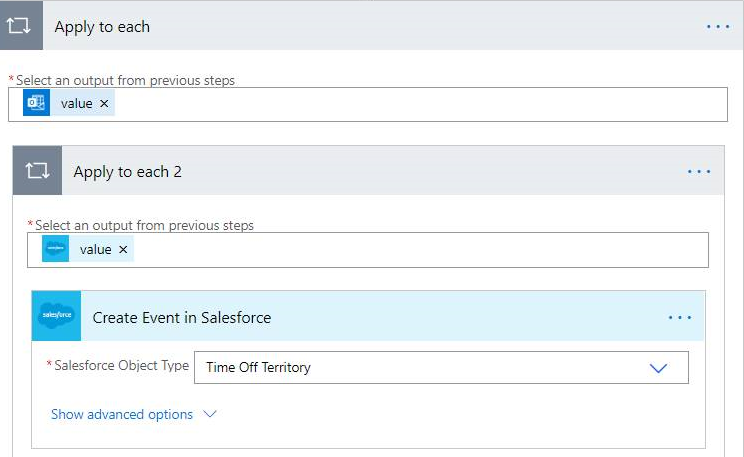

We use the Salesforce connector's "Create Record" action to add the outlook entries to Veeva CRM. To create a Time Off Territory entry, the Veeva object "Time Off Territory" is addressed in the Salesforce Object Type field.
The date of the outlook calendar entry is used as the "Start Date" of the Time Off Territory entry, the assignment to a user record is achieved using the IDs of the users fetched in the step two.
These steps complete the workflow for integrating German holidays as Time Off Territory in Veeva CRM.
Result
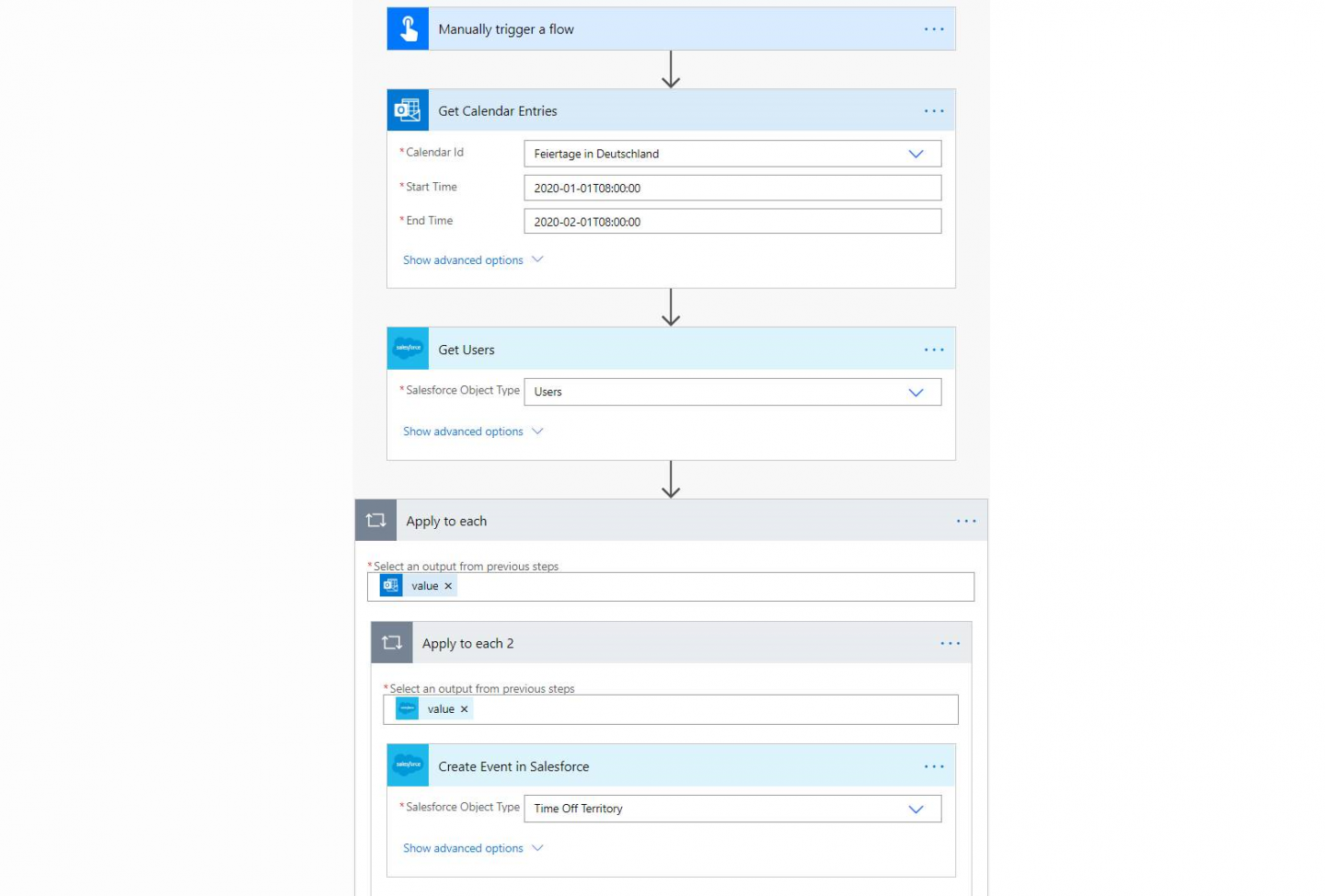
Running our workflow creates two Time Off Territory records (1st January and 6th January) in the selected date range. The result of the Power Automate workflow is visible in Veeva CRM - our workflow was successful!
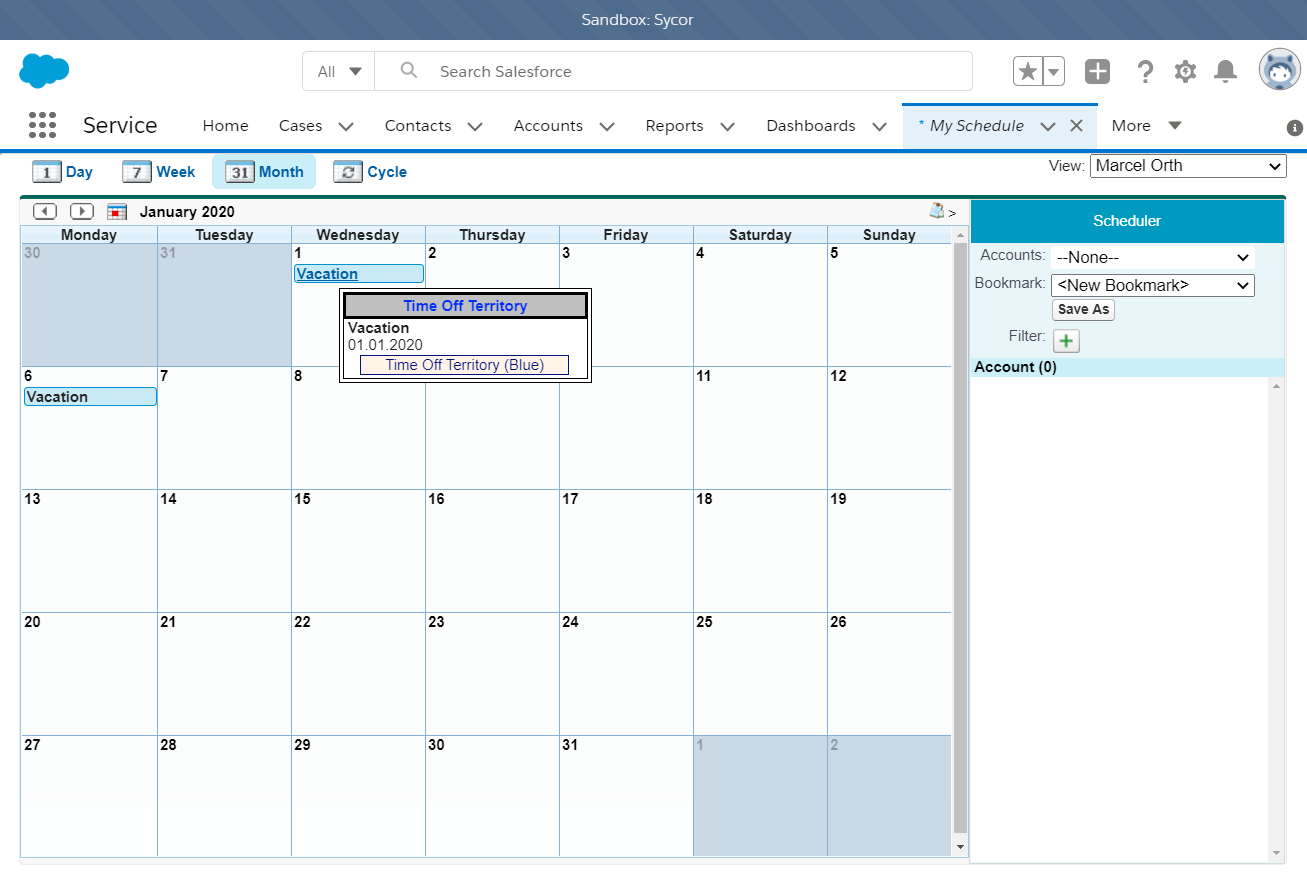
In this proof of concept, reading and writing of records in Veeva CRM via Power Automate were demonstrated. The Salesforce Connector is therefore also fully usable for handling Veeva CRM data.
This creates countless possibilities expanding and automating Veeva CRM as well as tailoring it to the company's own needs.
If you want to know more about the new possibilities, please don´t hesitate to contact us!
Do you have further questions?

Our partners
All partners







